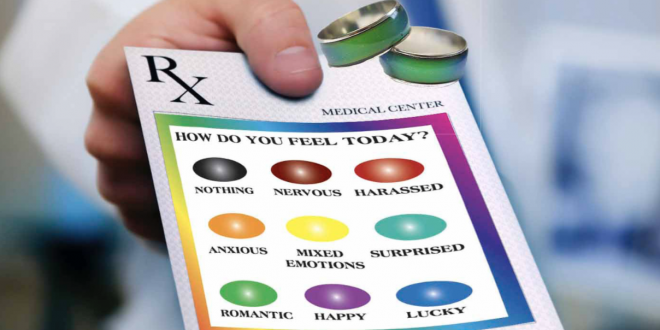Citing a shortage of trained psychologists and psychiatrists, Student Health Services has announced they will now prescribe Mood Rings for students in place of therapy. This revolutionary new technology should reduce the need for psychological care, according to SHS.
“I think this new method will simplify a lot of the paperwork for me. Students can really just be in and out, grab their mood rings and be on their way. And I don’t have to deal with insurance at all, which is nice, because mood rings aren’t covered for some reason,” cites Habif front desk employee Brenda Wallace, sporting a mood ring of her own.
Dr. Lauren Martin, SHS psychiatrist, has also expressed her support for the mood rings, explaining the science behind them in treating mental illness.
“I’ve been pushing for mood rings for a long time. I really think this will simplify care for students. You see, they are easy to use to manage emotions. If a student’s ring is dark blue, that means they are sad, which is bad. If the ring is yellow, the student is happy, and that is good,” Dr. Martin states, glancing at a crumpled sheet of paper in her pocket entitled MOOD RING COLOR KEY. Treatment is simple: students are encouraged to keep the ring yellow. Dr. Martin declined to comment when asked what further care would be upon a ring diagnosis of dark blue.
Sophomore Mark Fineman, one of the first students prescribed a mood ring by Habif, comments, “My ring’s just been red lately, which means… romance and love?” trying to read smudged expo marker off the palm of his hand. “Yeah, that definitely doesn’t add up. I’ve struck out since my welcome week hook-up ghosted me,” said Mark, tossing his ring in a nearby waste bin.
Students can register to receive their diagnostic mood rings from SHS starting December 1st, with the guarantee that the rings will be delivered by late March. If the program goes as planned, Habif hopes to begin prescribing supplementary chakra-aligning crystals in place of antidepressants in the future.
 WUnderground WashU's Premier (and only) satirical newspaper!
WUnderground WashU's Premier (and only) satirical newspaper!



